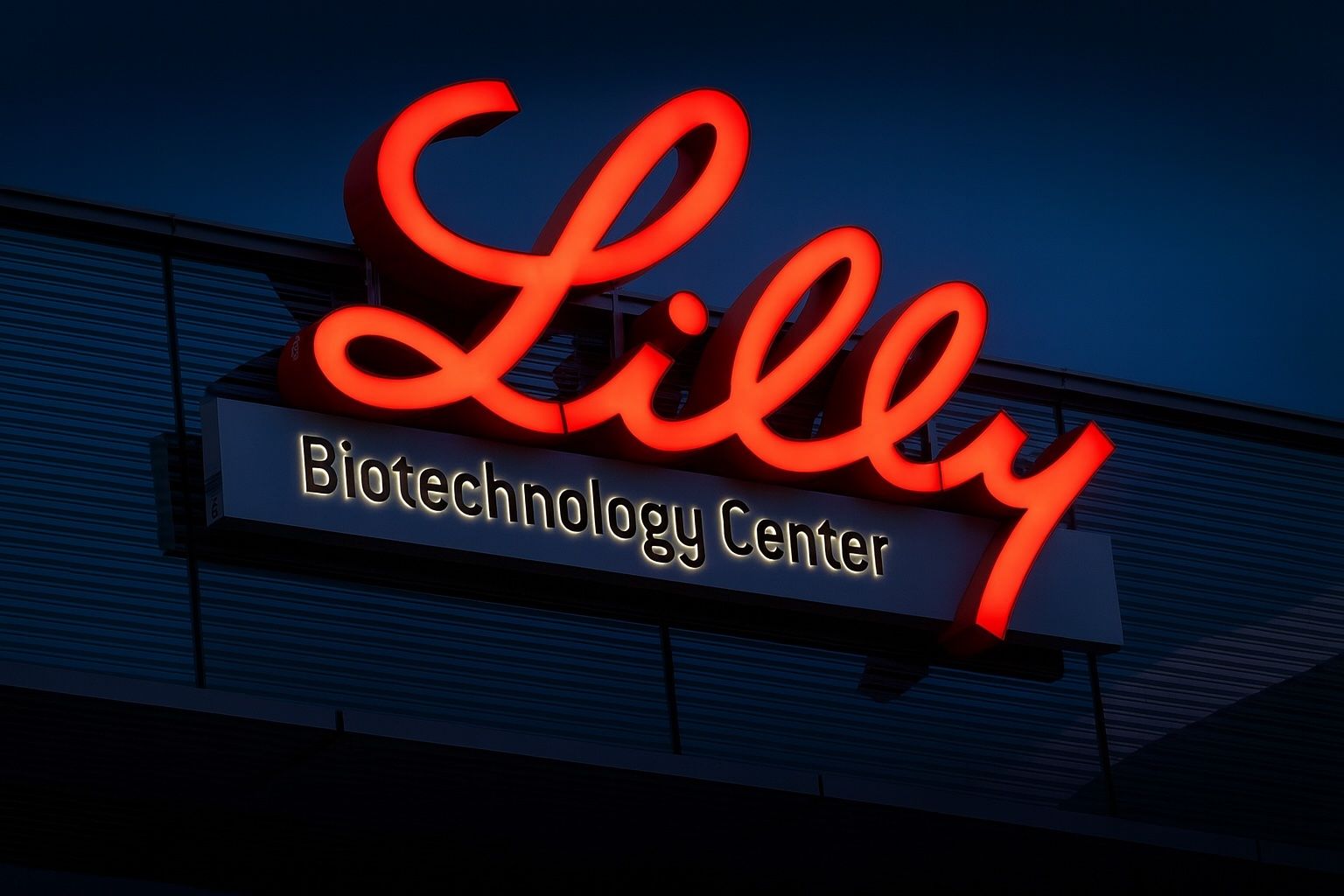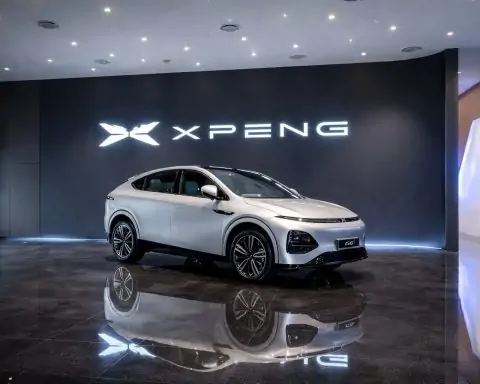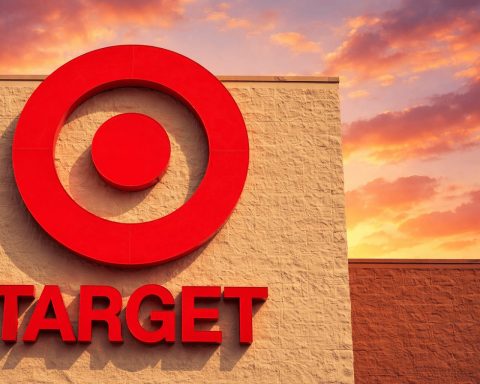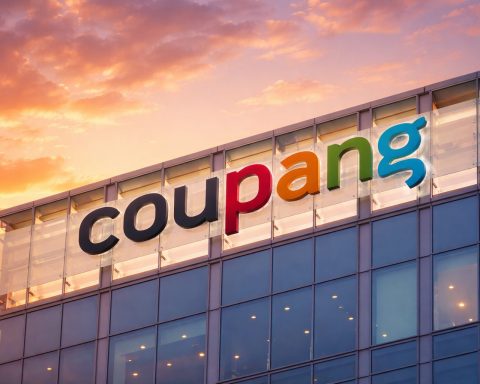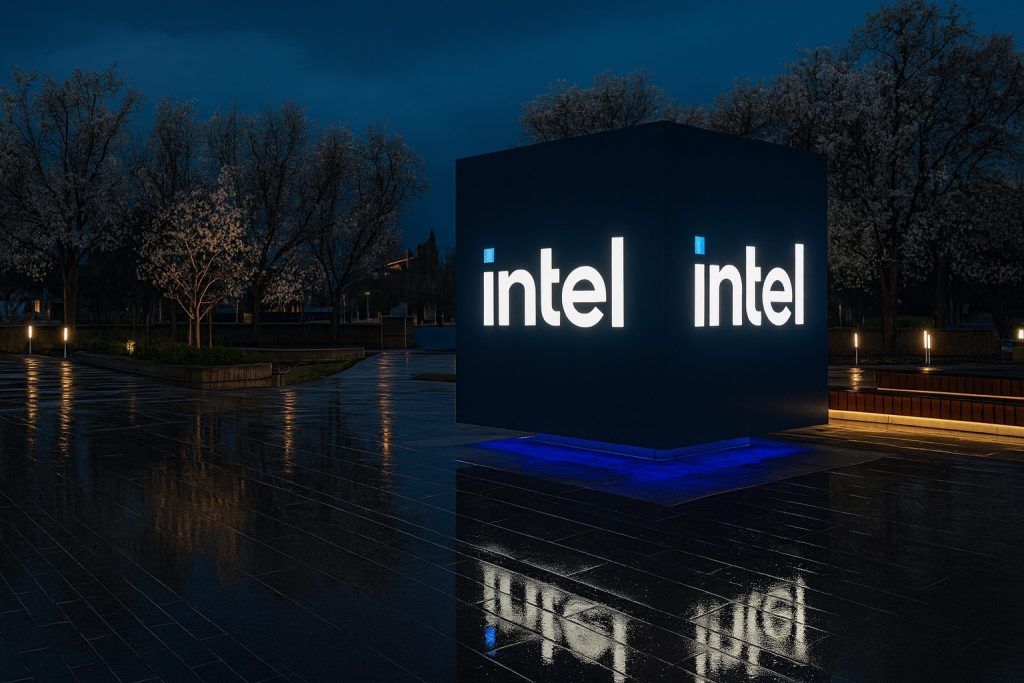- Stock price & valuation (Oct 6 2025): LLY opened around $840.46 on 6 Oct 2025 after closing $839.87 on 3 Oct 2025 [1]. The stock surged more than 9 % in the week prior, closing ~$726 on Sept 29 and ~$763 on Sept 30 before spiking to about $832 intraday on Oct 1 amid excitement over obesity drugs and Alzheimer’s research [2]. Market cap is roughly $795 billion with a price‑to‑earnings (P/E) ratio ≈ 55 [3]. A directorstalkinterviews analysis (25 Aug 2025) noted a $711.68 share price with a 24.72 % upside to an average target price of $887.60 and a forward P/E of 23.6 [4].
- Q2 2025 results & guidance: Revenue jumped 38 % to $15.56 billion, driven by soaring sales of Mounjaro and Zepbound. Earnings per share (EPS) were $6.31 (vs analysts’ estimate of $5.59) and return on equity reached 92.72 % [5]. Lilly raised full‑year 2025 guidance to $60–62 billion in revenue and $21.75–23.00 EPS [6]. Its Q1 results showed 45 % revenue growth to $12.73 billion, and management said only ~4 % of eligible patients use GLP‑1 drugs, implying huge untapped demand [7].
- Major news (Oct 6 2025):
- India manufacturing expansion: Reuters reported Lilly will invest over $1 billion in India to expand manufacturing capacity via local partners. President of Lilly International Patrik Jonsson said the company is “making significant investments to increase manufacturing and medicine supply capacity around the world” [8]. Lilly recently invested $5 billion in a new facility in Virginia as part of a $27 billion U.S. expansion, and its India launch of Mounjaro has doubled sales [9].
- European approval of Kisunla (donanemab) for early Alzheimer’s disease: The European Commission granted marketing authorization on 25 Sep 2025. Lilly executive Patrik Jonsson said Kisunla slowed cognitive and functional decline in the Phase 3 TRAILBLAZER‑ALZ 2 trial and offers “more time” to patients [10]. Kisunla is administered once monthly and can be discontinued when amyloid plaques are sufficiently reduced, lowering infusion burden and costs [11].
- FDA approval of Inluriyo (imlunestrant) for ESR1‑mutated, ER‑positive metastatic breast cancer: The once‑daily pill reduced the risk of progression or death by 38 % and lengthened median progression‑free survival to 5.5 months versus 3.8 months for endocrine therapy [12]. Lilly Oncology president Jacob Van Naarden called it a convenient option that underscores Lilly’s commitment to improving outcomes [13].
- Pediatric Mounjaro study: The SURPASS‑PEDS trial showed Mounjaro significantly improved A1C (–2.2 percentage points) and body‑mass index (–11.2 %) in adolescents with type 2 diabetes [14].
- Pipeline & strategic moves: Lilly is developing the oral GLP‑1 pill orforglipron; analysts say the FDA’s voucher program could speed approval, and Jefferies and Citi believe it is a prime candidate for rapid authorization [15]. RBC Capital Markets estimated that success of Kisunla could expand the Alzheimer’s market ten‑fold and add ~$4 billion in U.S. sales [16]. Lilly has also acquired SiteOne Therapeutics (non‑opioid pain drugs) and Verve Therapeutics (gene‑editing for cardiovascular disease) [17].
- Analyst sentiment & forecasts: MarketBeat reports a “Moderate Buy” consensus rating with 25 analysts (14 buy, 10 hold, 1 strong buy) and a $938.94 average price target (high $1,190, low $700), implying ≈12 % upside from the Oct 3 close [18]. Directorstalkinterviews noted 21 buy ratings and only one sell rating [19]. Some quantitative models project LLY around $768 by end‑2025 and $1,030 by end‑2026 [20].
In‑Depth Report
Introduction
Eli Lilly and Company (NYSE: LLY) has become the poster‑child for the emerging class of GLP‑1‑based obesity and diabetes therapies. Its injectable tirzepatide products Mounjaro (for type 2 diabetes) and Zepbound (for chronic weight management) have delivered explosive growth, propelling the company’s market capitalization into the high‑hundred‑billion range. On 6 Oct 2025, LLY traded around $840, close to its all‑time highs [21]. The company’s pivot toward metabolic and neurodegenerative diseases, combined with an aggressive manufacturing expansion, has made it one of the most closely watched stocks on Wall Street.
Stock Performance and Valuation
After an extraordinary rally in late September 2025, LLY opened at $840.46 on 6 Oct 2025 and closed $839.87 on 3 Oct [22], representing a roughly 15 % gain over the prior week. The 52‑week range was approximately $623.78–$937 [23], and the 50‑day and 200‑day moving averages were $734.60 and $765.44 respectively [24]. MarketBeat lists Lilly’s market capitalization at $795.46 billion and a P/E ratio of 54.93, reflecting investor expectation of sustained high growth [25]. The company carries a debt‑to‑equity ratio of 1.86 and pays a modest dividend (≈0.84 % yield) with a payout ratio around 36 % [26].
Technical indicators are mixed. Directorstalkinterviews noted that in late August the stock price was below its 50‑ and 200‑day moving averages and the relative strength index (~41) signaled the shares were approaching oversold territory [27]. However, the September rally reversed this weakness. The stock’s volatility has been amplified by speculation on obesity‑drug demand and Alzheimer’s trial outcomes; options volume surged during the week of Oct 1 [28].
Financial Results and Guidance
Lilly’s 2025 earnings have been stellar. In Q1 2025, revenue jumped 45 % to $12.73 billion, with non‑GAAP EPS rising 29 % to $3.34 [29]. Q2 2025 revenue surged 37.6 % to $15.56 billion, far exceeding analysts’ expectations, and EPS rose 92 % to $6.31 [30]. Return on equity was a remarkable 92.72 % and net margin 25.91 % [31]. Management increased full‑year guidance to $60–62 billion in sales and $21.75–23.00 EPS [32], reflecting confidence in ongoing demand for Mounjaro and Zepbound. Lilly’s CFO highlighted that only about 4 % of eligible patients currently use GLP‑1 drugs, implying years of growth ahead [33].
Major News (Week of Oct 6 2025)
$1 billion India manufacturing expansion
On 6 Oct 2025 Reuters reported that Lilly will invest more than $1 billion in India to boost drug manufacturing and supply via partnerships with local firms [34]. Patrik Jonsson, president of Lilly International, said the company is “making significant investments to increase manufacturing and medicine supply capacity around the world” [35]. The expansion aims to ensure adequate supply of Lilly’s obesity, diabetes, Alzheimer’s and oncology drugs. The company launched Mounjaro in India earlier in 2025; demand alongside Novo Nordisk’s Wegovy doubled sales within months [36]. Lilly is also establishing a new manufacturing and quality facility in Hyderabad and plans to hire engineers, chemists and quality experts [37]. This initiative follows a $5 billion investment in a Virginia plant announced in September as part of a broader $27 billion U.S. expansion plan [38].
EU approval for Kisunla (donanemab) and Alzheimer’s pipeline
On 25 Sep 2025 the European Commission approved Kisunla (donanemab), Lilly’s monoclonal antibody for early symptomatic Alzheimer’s disease [39]. The approval applies to adults with mild cognitive impairment or mild dementia who are apolipoprotein E4 heterozygotes or non‑carriers [40]. Patrik Jonsson noted that Kisunla slowed cognitive and functional decline in the Phase 3 TRAILBLAZER‑ALZ 2 study and offers patients “more time to do what they love” [41]. Kisunla is the only once‑monthly amyloid‑targeting therapy with evidence supporting completion of treatment once amyloid is sufficiently reduced, potentially lowering infusion burden and cost [42]. The EU approval adds to a July 2025 U.S. label update allowing a titration regimen to reduce ARIA (amyloid‑related imaging abnormalities). Analysts at RBC expect successful donanemab trials could expand the Alzheimer’s market ten‑fold and add roughly $4 billion in U.S. sales [43].
Beyond donanemab, Lilly is running the TRAILBLAZER‑3 trial in pre‑symptomatic patients; positive results could significantly enlarge the addressable market and, according to investing models, boost LLY shares by ~25 % [44].
FDA approval for Inluriyo (imlunestrant)
On 25 Sep 2025 the U.S. FDA approved Inluriyo (imlunestrant) for ER‑positive, HER2‑negative, ESR1‑mutated advanced or metastatic breast cancer. In the EMBER‑3 trial, Inluriyo reduced the risk of progression or death by 38 % compared with standard endocrine therapy and improved median progression‑free survival to 5.5 months versus 3.8 months [45]. The drug binds, blocks and promotes degradation of overactive estrogen receptors and is taken once daily, offering convenience over injections [46]. Jacob Van Naarden, head of Lilly Oncology, said the approval highlights Lilly’s commitment to improving outcomes and the treatment journey for patients [47]. Dr. Komal Jhaveri of Memorial Sloan Kettering called Inluriyo a much‑needed option for patients with ESR1 mutations, citing its efficacy and tolerability [48].
Pediatric Mounjaro trial
Lilly announced results from SURPASS‑PEDS, a Phase 3 trial evaluating Mounjaro in children and adolescents with type 2 diabetes. At 30 weeks, tirzepatide significantly improved A1C (–2.2 percentage points) and reduced BMI (–11.2 %), with 86 % of participants on the 10 mg dose achieving A1C ≤ 6.5 % [49]. Investigator Dr. Tamara Hannon noted that type 2 diabetes progresses more aggressively in youth and these results show clinically meaningful improvements in blood sugar and weight [50]. Lilly plans to submit these data to regulators, potentially expanding Mounjaro’s indication to younger patients.
Oral GLP‑1 pill orforglipron and weight‑loss competition
Lilly’s oral GLP‑1 candidate orforglipron has shown promising Phase 3 results, lowering A1C and body weight (~10 %) in type 2 diabetes and achieving 12.4 % weight loss in a 72‑week obesity study [51]. A Reuters article on 16 Sep 2025 explained that a new FDA voucher program might accelerate approval; analysts from Jefferies and Citi viewed orforglipron as an ideal candidate given high manufacturing costs of injectable GLP‑1 drugs [52]. Dr. Angela Fitch suggested that an effective pill could become a “commodity treatment for obesity,” potentially transforming the market [53].
Pipeline, Deals and Legal Actions
Besides donanemab and tirzepatide, Lilly is broadening its pipeline across cardiometabolic, neurology and oncology indications:
- Weight‑loss and diabetes franchise: Lilly holds roughly 57 % of U.S. GLP‑1 prescriptions, compared with Novo Nordisk’s 43 % [54]. The company is developing next‑generation dual agonists and complementary agents (e.g., amylin analogs), and a once‑weekly insulin efsitora demonstrated non‑inferior A1C control versus daily insulin with simpler dosing [55].
- Oncology: In addition to Inluriyo, Lilly markets Jaypirca (BTK inhibitor) and has a robust oncology pipeline. It acquired Scorpion Therapeutics’ PI3K‑alpha inhibitor for $2.5 billion in 2024 and continues to develop targeted therapies [56].
- Deals: The company completed acquisitions of SiteOne Therapeutics (non‑opioid pain drugs) for up to $1 billion and Verve Therapeutics for gene‑editing cardiovascular therapy [57]. It also expanded partnerships with KeyBioscience and Insitro to develop dual amylin/calcitonin agonists and AI‑discovered metabolic drugs [58].
- Legal challenges: Lilly has filed suits against telehealth firms selling compounded copies of its GLP‑1 drugs and is defending against a lawsuit by Texas Attorney General Ken Paxton alleging improper inducements to prescribers [59].
Analyst Commentary and Forecasts
Analysts remain broadly bullish on Lilly but caution about its lofty valuation and competitive threats:
- MarketBeat and consensus: MarketBeat reports a “Moderate Buy” consensus from 25 analysts with a $938.94 average price target, indicating ≈12 % upside from early October prices [60]. Price targets range from $700 to $1,190 [61].
- Directorstalkinterviews: A 25 Aug 2025 analysis estimated a 24.72 % upside to a target price of $887.60, noting a forward P/E of 23.6, revenue growth of 37.6 % and return on equity 86.29 % [62]. Technical indicators suggested the stock was approaching oversold territory at that time [63].
- RBC Capital Markets: RBC believes that success of donanemab could open an Alzheimer’s market “ten times the current segment,” adding roughly $4 billion in U.S. sales and positioning Lilly as a leader in early Alzheimer’s therapy [64]. RBC analysts also emphasize the potential of Lilly’s pipeline beyond obesity.
- Jefferies and Citi Research: Analysts from these firms told Reuters that orforglipron is well suited for the FDA’s expedited program because it treats a high‑burden chronic condition and could be priced at parity worldwide [65].
- Concerns over competition: A Reuters Breakingviews commentary warned that new entrants are investing billions in obesity drugs—Roche acquired 89bio for $3.5 billion, Carmot Therapeutics for $3 billion and Zealand Pharma’s oral drug for $1.6 billion; Pfizer bought Metsera for $7 billion. Analysts caution that these competitors could erode the current duopoly of Lilly and Novo Nordisk. Breakingviews noted that Lilly trades at 27 times forward earnings versus 14 times for Novo and that if Lilly and Novo’s share of the expected $130 billion obesity market drops to 50 %, they could collectively lose $325 billion in revenue [66] [67].
Competitive Landscape and Sector Context
The success of GLP‑1 drugs has spurred a gold‑rush among pharmaceutical companies. Lilly and Novo Nordisk dominate the category today, but the market is evolving:
- Roche, Pfizer and others have committed more than $10 billion to acquire or develop obesity treatments, including oral GLP‑1 pills and next‑generation hormones [68]. Many new candidates aim to reduce gastrointestinal side effects and muscle loss associated with current drugs, which could expand patient uptake [69].
- Novo Nordisk remains a formidable rival. While Lilly has overtaken Novo in U.S. GLP‑1 prescriptions (≈57 % vs 43 %) [70], Novo still leads globally and is testing its own oral semaglutide, which could intensify competition. Novo’s revenue growth (~18 % in H1 2025) lags Lilly’s 40 % growth [71], but Novo’s valuation (P/E ~14×) is far lower [72].
- Broader biopharma sector: Compared with other major drugmakers (Pfizer, Merck, Johnson & Johnson), Lilly trades more like a high‑growth tech stock. Pfizer is focusing on oncology (after acquiring Seagen) and lacks a comparable obesity franchise; AbbVie relies on immunology stalwarts like Humira and has slower growth. The sector is also shifting as gene‑editing and mRNA platforms mature, potentially creating new opportunities and risks.
Outlook and Risks
Eli Lilly’s outlook appears robust. With blockbuster sales of Mounjaro and Zepbound, expanding manufacturing capacity and a diversified pipeline (donanemab, orforglipron, imlunestrant, efsitora, gene‑editing therapies and pain drugs), Lilly is positioned for continued high growth. Consensus price targets around $900–940 and long‑range forecasts of $1,000+ by 2026 reflect optimism [73] [74].
However, several risks loom:
- Competition: Emerging players are investing heavily in obesity drugs, and oral or multi‑hormone therapies could erode Lilly’s market share [75]. Novo Nordisk’s oral semaglutide and other rivals could challenge tirzepatide.
- Valuation: Lilly’s P/E multiple (~55× trailing) implies perfection; any slowdown in GLP‑1 adoption or disappointing trial results could trigger a correction [76].
- Regulatory and legal issues: Allegations of improper marketing (e.g., Texas AG lawsuit) and the need to police compounding pharmacies pose reputational and financial risks [77].
- Manufacturing capacity: Scaling production of complex biologics and meeting global demand remain challenges; delays or quality issues at new facilities could affect supply.
- Pipeline execution: Success of donanemab and orforglipron is not guaranteed. Late‑stage trial failures or safety concerns could derail growth.
Conclusion
As of October 6 2025, Eli Lilly stands at the center of the pharmaceutical world. Its leadership in GLP‑1 obesity and diabetes treatments, combined with promising Alzheimer’s, oncology and gene‑editing pipelines, has fueled a meteoric rise in its stock price and market value. Robust financial results and upgraded guidance underscore the commercial momentum. Yet the company’s rich valuation and intensifying competition leave little room for missteps. Investors betting on LLY are effectively wagering that tirzepatide remains dominant, that donanemab unlocks a huge Alzheimer’s market, and that Lilly’s R&D engine continues to deliver. While those outcomes appear plausible, the coming years will test whether Lilly can convert its scientific breakthroughs into sustained, diversified profits.
References
1. www.marketbeat.com, 2. ts2.tech, 3. www.marketbeat.com, 4. www.directorstalkinterviews.com, 5. www.marketbeat.com, 6. www.marketbeat.com, 7. ts2.tech, 8. www.reuters.com, 9. www.reuters.com, 10. investor.lilly.com, 11. investor.lilly.com, 12. investor.lilly.com, 13. investor.lilly.com, 14. investor.lilly.com, 15. www.reuters.com, 16. ts2.tech, 17. ts2.tech, 18. www.marketbeat.com, 19. www.directorstalkinterviews.com, 20. ts2.tech, 21. www.marketbeat.com, 22. www.marketbeat.com, 23. www.marketbeat.com, 24. www.marketbeat.com, 25. www.marketbeat.com, 26. www.directorstalkinterviews.com, 27. www.directorstalkinterviews.com, 28. ts2.tech, 29. ts2.tech, 30. www.marketbeat.com, 31. www.marketbeat.com, 32. www.marketbeat.com, 33. ts2.tech, 34. www.reuters.com, 35. www.reuters.com, 36. www.reuters.com, 37. www.reuters.com, 38. www.reuters.com, 39. investor.lilly.com, 40. investor.lilly.com, 41. investor.lilly.com, 42. investor.lilly.com, 43. ts2.tech, 44. ts2.tech, 45. investor.lilly.com, 46. investor.lilly.com, 47. investor.lilly.com, 48. investor.lilly.com, 49. investor.lilly.com, 50. investor.lilly.com, 51. ts2.tech, 52. www.reuters.com, 53. www.reuters.com, 54. ts2.tech, 55. ts2.tech, 56. ts2.tech, 57. ts2.tech, 58. ts2.tech, 59. ts2.tech, 60. www.marketbeat.com, 61. www.marketbeat.com, 62. www.directorstalkinterviews.com, 63. www.directorstalkinterviews.com, 64. ts2.tech, 65. www.reuters.com, 66. www.reuters.com, 67. www.reuters.com, 68. www.reuters.com, 69. www.reuters.com, 70. ts2.tech, 71. ts2.tech, 72. www.reuters.com, 73. www.marketbeat.com, 74. ts2.tech, 75. www.reuters.com, 76. www.reuters.com, 77. ts2.tech
